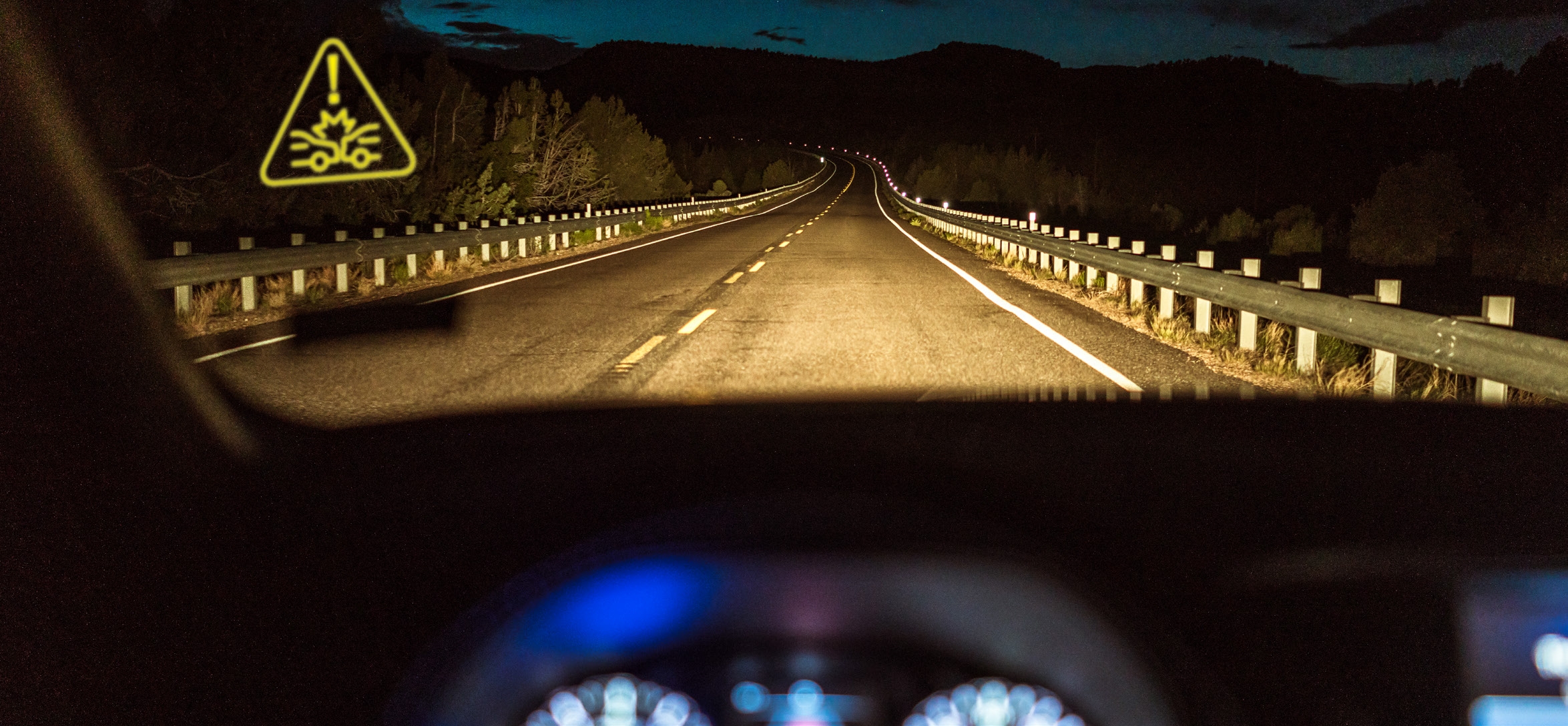Automotive algorithms: Extending a driver’s situational awareness
May 20, 2019

It’s late, and you’re driving home through the darkness. The road curves ahead of you, but before you barrel around the corner, a notification flashes in the corner of your windshield: there’s a crash ahead. You ease up on the gas and safely approach.
An advance warning system is just one possible feature of vehicle-to-everything communications (V2X) technology. “Right now, we’ve only got our eyes and our instincts,” said Jerry Park, ECE professor, who is studying V2X technologies and applications.
Some of today’s high-end vehicles, especially those that support autonomous and automated driving, are equipped with sophisticated sensors such as stereo cameras, LIDARS, and radars. V2X augments and enhances the capabilities of these sensors to broaden a driver’s situational awareness to extend beyond line of sight.
In 1999, the U.S. Federal Communications Commission (FCC) allocated 75 MHz of spectrum in the 5.9 GHz band to support V2X technologies and applications. Soon after, spectrum regulatory agencies of other countries followed suit.
Park and his research assistants are studying a number of open problems in V2X, including a comprehensive evaluation of the pros and cons of two leading V2X technologies: Dedicated Short-Range Communications (DSRC) and Cellular V2X (C-V2X). Currently, there is no consensus among the industry stakeholders regarding which technology should be adopted to enable emerging V2X applications. The automotive and wireless industries are split into two camps, each camp favoring one technology over the other. “We don’t know which one will win out over the other, or if they will coexist,” said Park. “But we are studying the advantages and shortcomings of each technology, as well as what it would mean for them to coexist.”
Park and his collaborators are also investigating the security and privacy issues specific to V2X applications. One potential threat to a driver’s privacy is posed by the broadcast of safety messages which contain a vehicle’s state and predicted path. “Someone could eavesdrop on and accumulate these messages in order to discover a particular vehicle’s location or track its movement,” said Park. “We are exploring techniques to protect a driver’s location privacy while still supporting these safety applications.”
The next evolutionary step for V2X technologies is enabling the next step of vehicular technology advancement: fully autonomous driving.


